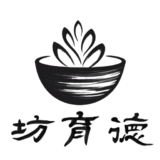Chado pracrice the handling of hishaku
November 17, 2024 2024-11-18 5:01Chado pracrice the handling of hishaku
Chado pracrice the handling of hishaku
Using a water ladle, or bing shao (饼勺), is an art that combines mindfulness, technique, and energy flow. Here’s a step-by-step guide to mastering its use.
1. Picking Up the Ladle
When picking up the ladle, avoid gripping it tightly or casually. Such tension can affect your movements. In tea practice, we follow the principle of lifting heavy things as if they are light, and light things as if they are heavy.
To correctly lift the ladle:
- Use three fingers to gently pinch the middle of the handle.
- Keep the ladle head resting on the water container.
- Gradually lift until your wrist naturally supports the handle like a lever.
- Assist with your right hand to stabilize the ladle head and flip it over smoothly.
Key points:
- Keep your left hand relaxed; do not stretch or tense your fingers.
- Ensure the ladle feels like an extension of your arm.
2. Body Alignment and Relaxation
After holding the ladle, take a moment to pause and check:
- Is the ladle head perpendicular to the tatami?
- Is the height of the ladle level with your chest?
- Are your arms and hands relaxed, forming a posture like hugging a tree?
This “hugging a tree” position allows energy (qi) to flow more freely. Imagine you are holding an invisible balloon of energy between your arms. Pause for one to two seconds to feel the alignment and connection within your body.
3. Scooping Water
To scoop water:
- Use your right hand to turn the ladle horizontally.
- Maintain a relaxed left hand, gripping lightly at two points to form a lever.
- Direct the force to your dantian (lower abdomen) for stability.
- Guide the ladle smoothly into the water with your thumb and fingers in sync.
Important: The ladle should align with your palm and fingers, forming a natural extension of your arm. As the ladle turns, focus on movement originating from your abdomen, not just your wrist.
4. Advanced Practice
In more advanced practice, integrate your qi (energy) and intention with your movements:
- First, visualize the ladle entering the water.
- Then, guide your qi to follow your intention.
- Finally, let your physical movement complete the action.
This approach—mind leading energy, energy leading movement—is a refined practice that takes time and focus to master.
Conclusion
Mastering the use of the water ladle is both an art and a journey. In future lessons, we’ll explore its crafting, techniques for cutting, and its role in drinking rituals. If you have any questions, feel free to leave a comment. Thank you!
茶道练习:柄勺的使用
饼勺的使用是一门结合了专注、技巧与气息流动的艺术。以下是逐步掌握饼勺使用方法的指导。
1. 拿起饼勺
拿起饼勺时,避免随意或用力抓取。这样的动作会导致手部紧张,从而影响操作。在茶道中,我们讲究“举中若轻,举轻若重”。
正确的步骤:
- 用三根手指轻轻捏住饼勺的中间位置。
- 让勺头依然停留在戒水上。
- 慢慢抬起,直到手腕自然支撑饼勺形成杠杆作用。
- 用右手辅助稳定勺头,并将其平滑地翻转过来。
关键点:
- 左手保持放松,不要伸直或用力。
- 饼勺应感觉像是手臂的自然延伸。
2. 身体对齐与放松
拿起饼勺后,短暂停留,检查以下几点:
- 勺头是否垂直于榻榻米?
- 勺头的高度是否与胸口水平一致?
- 手臂是否放松,形成类似“怀抱大树”的姿势?
“怀抱大树”的姿势有助于气息在身体中的流动。想象你怀抱着一个看不见但可以感知到的气球。停留一到两秒,感受身体的中正和内在连接。
3. 舀水
舀水时:
- 用右手将饼勺水平翻转。
- 左手保持轻松,用两个接触点形成杠杆力。
- 将力量传导至丹田,以增加稳定性。
- 手指和拇指配合,将勺头自然引入水中。
注意:饼勺的面应与手掌和手指对齐,形成手臂的自然延伸。转动勺头时,感受动作源于腹部,而非仅仅是手腕的动作。
4. 进阶练习
在更高阶的练习中,将动作与“气”和“意念”结合:
- 首先,意念引导饼勺进入水中。
- 接着,气随意动,带动动作流畅完成。
- 最后,身体的物理动作才落地完成。
这种“意动气随,气动形随”的练习需要时间与专注去掌握。
总结
掌握饼勺的使用既是一门艺术,也是一个探索的过程。在未来的课程中,我们将分享饼勺的制作、切割技巧及其在饮茶中的应用。如果有任何问题,欢迎留言讨论。谢谢!










